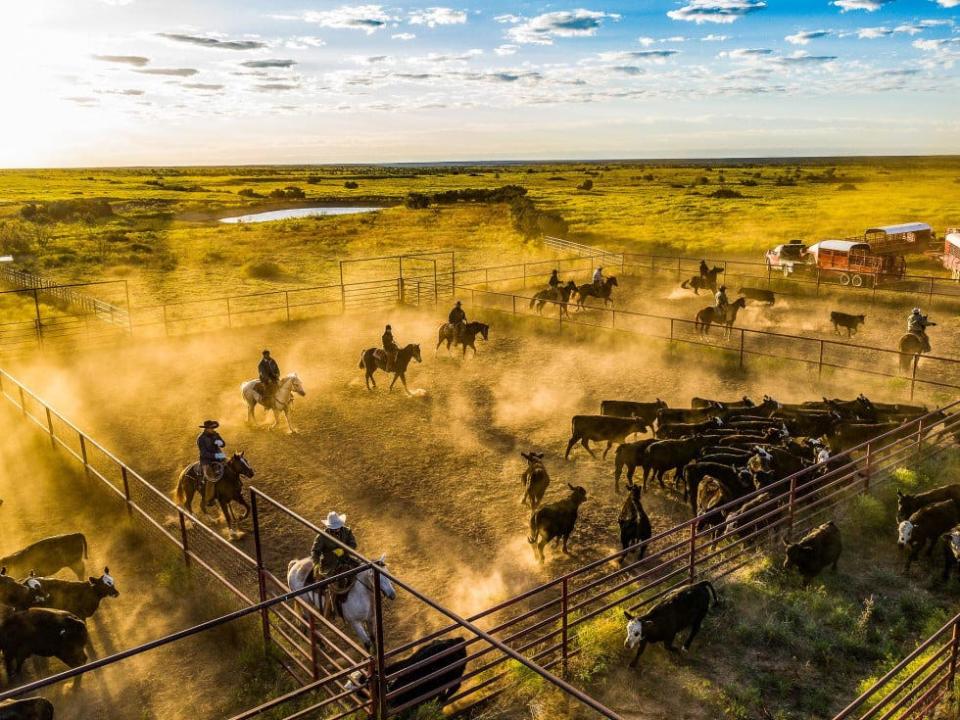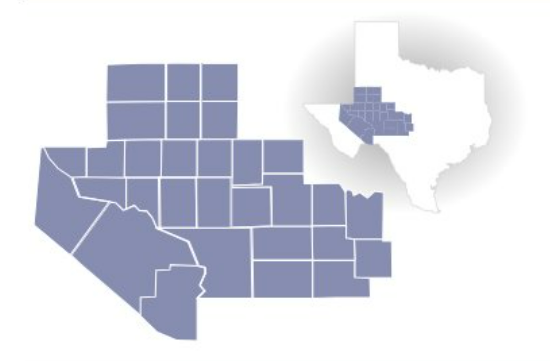Weird West Texas: Unraveling the heated debate of where West Texas is actually located
Lubbock? El Paso? Abilene? Are any of these actually located in West Texas?
It's the debate of all debates — and every person has a different answer.
After exploring the region's UFO history and mysterious underground tunnels, it may not be that weird of a topic. But I do think it is pretty weird that many West Texans can't firmly agree where West Texas is actually located.
As part of the Weird West Texas series, we explore some of the most odd, eccentric and just plain weird things in our region — from the state's northernmost town of Hitchland down into the Big Country, eastward to the Rolling Plains and all the way to El Paso.

This week, we’re unraveling the discourse of West Texas' boundaries.
(For what it's worth, I do realize many of the cities I've included in the Weird West Texas series don't actually fall in West Texas — by popular opinion or fact, but I continue to include them. After all, West Texas is a state of mind before it is a region with set boundaries.)
Listen: Weird West Texas: The Podcast talks recent cattle mutilations and UFO mysteries
The most heated debate in history
This map is what I envision, except the six counties west of the Trans-Pecos is Far West Texas and the remainder would be red with certainty. https://t.co/9wQ1DOS82o pic.twitter.com/dZiYWjF4ti
— Brandi D. Addison 🗞🌱 (@BrandiDAddison) August 4, 2023
That may be a bit of an exaggeration, but the debate is pretty controversial. Let's dive in.
Some may argue the entire universe is West Texas after the Gamblin' Gauchos — a podcast that follows Texas Tech Athletics — coined a new slogan late last year, claiming "It's All West Texas." In fact, Texas Tech fans even purchased a billboard in Houston ahead of Texas Tech's win in the Texas Bowl against Ole Miss that said "Houston is West Texas" along with the Texas Tech logo spanning over an outline of the state.
One poor Houstonian who wasn't familiar with the popular phrase tweeted a photo of the billboard, stating he "wouldn't suggest studying geography at Texas Tech based off of this billboard." It wasn't long before hundreds of fans flooded his replies explaining that "It's All West Texas."
So, I wasn't surprised when I did a call-out on Twitter (X?) asking for people's opinions on West Texas boundaries. A few remarked that "It's all West Texas."
Local music journalist Tom Mooney and the music artist Charlie Stout both replied, "If I'm standing on it, it's West Texas."
https://t.co/JxKCECvx8p
This was a fun thread.— Chuck McElroy 🌵 (@Road_Builder_TX) August 4, 2023
Many drew their own pictures for consideration. One D-FW resident jokingly (I hope) said anything west of Weatherford. Some included the Panhandle as West Texas, and others excluded anything north of Lamesa, including the South Plains, as West Texas.
I recall debating the contentious issue of whether Lubbock was in West Texas with a lot of Midlanders when I lived there in 2019. So, naturally, I created a poll over it on Twitter, and the majority of respondents, totaling 186 votes, agreed that Lubbock is indeed in West Texas. Here's the breakdown:
52.7% of voters who have lived or currently live in Lubbock believe Lubbock is in West Texas
36.6% of voters who have never lived in Lubbock believe Lubbock is in West Texas
2.2% of voters who have lived or currently live in Lubbock don't believe Lubbock is in West Texas
8.6% of voters who have never lived in Lubbock believe Lubbock is in West Texas
For the most part, however, most respondents had the same general area in mind: As east as Abilene, as north as Plainview, as south as Del Rio and as west as Pecos. (The other side of Pecos, which includes El Paso, is considered the "Trans-Pecos", "Far West Texas" or the "Northern Rio Grande.")
The real West Texas

Much to my disliking (and as much as I hate to admit that Midlanders are right), Lubbock does not actually fall in West Texas, according to the Texas Comptroller of Public Accounts. Neither does Abilene, Amarillo and El Paso.
I was actually surprised to see the true West Texas region stretching all the way to Mason County, which sits just northwest of Fredericksburg.
Amarillo and Lubbock both fall in the High Plains; Abilene in the Northwest, which stretches across the Rolling Plains to the Texas-Oklahoma border; and El Paso in the Upper Rio Grande.
The major cities that fall within West Texas boundaries, according to the Texas Comptroller's office, include Andrews, Lamesa, Midland, Odessa, Pecos and San Angelo.
But that's just the opinion of the Comptroller's Office. Many claim West Texas in one form or fashion, including West Texas A&M University in Canyon - in the undisputed Panhandle of West Texas - as well as established organizations and business like the West Texas Rehabilitation Center in Abilene or the West Texas Home Builders Association in Lubbock, just to name a few.
As I said before, West Texas is a state of mind, and I'll continue to refer to myself as a West Texan.
Have a different opinion about this topic or a different tale to tell? Send it our way — we'd love to hear all about it! Or if you're curious about one of our region's many oddities, submit your question via email to BAddison@gannett.com with "Weird West Texas" in the subject line or via text at 806.496.4073.
This article originally appeared on Lubbock Avalanche-Journal: The heated debate of where West Texas is actually located

